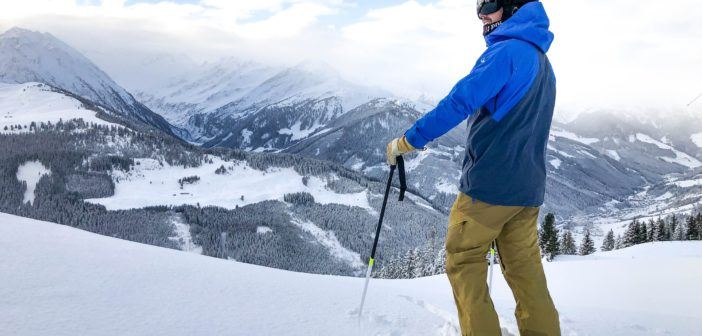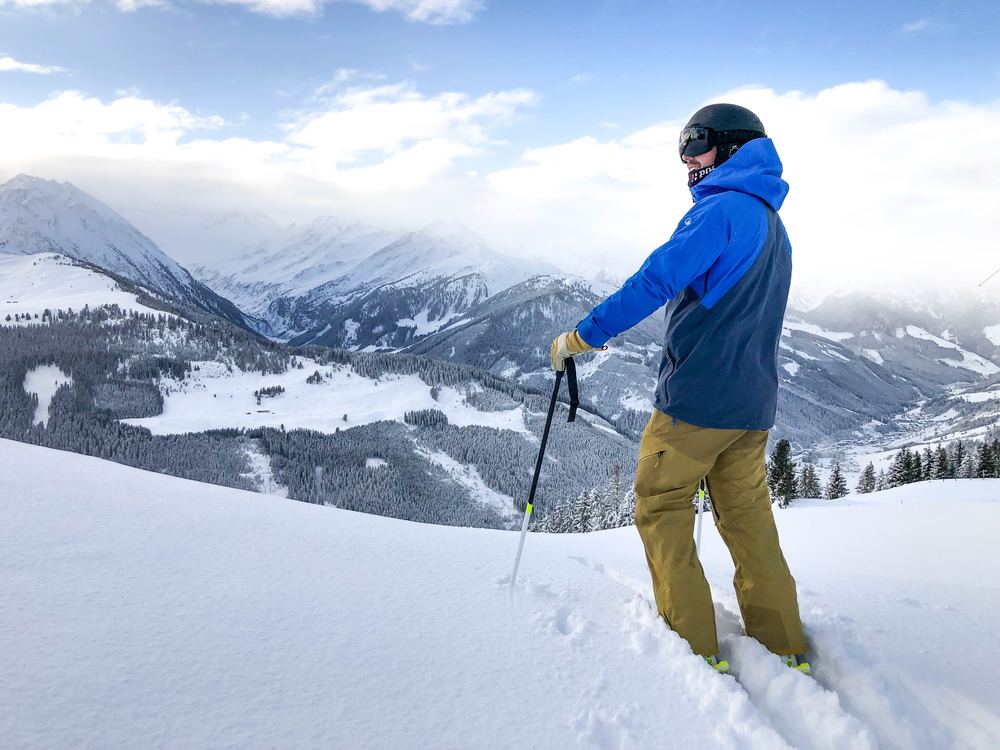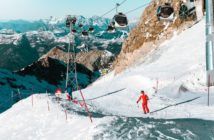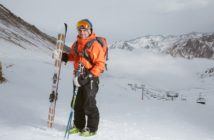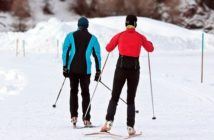Most people ski on the well-groomed slopes at resorts, where the snow tends to get trampled down throughout the day.
If you’re getting bored of taking the same routes over and over through snow that just isn’t powdery enough anymore, then you may want to try a new adventure: cat skiing!
But exactly what is cat skiing? Where do you go to try it, what should you bring with you when you go, and what should you expect? Do you have to bring or own a cat?
We have all those details and more, so let’s dive into the nitty-gritty of cat skiing.
Contents
What is Cat Skiing?
A cat skiing definition is best described as a kind of guided backcountry skiing venture. It is different from skiing on a controlled ski slope at a resort.
Instead, you travel beyond the borders of the typical ski area, away from the snow that has already been trampled on by other skiers, and end up high in the mountains, where you can ski over untouched snow in the wild outdoors of the backcountry.
So no, you don’t have to bring your housecat with you. They probably wouldn’t enjoy it anyhow.
Cat skiing is also referred to as “snowcat skiing.” Both the terms “cat” and “snowcat” refer to the vehicle that takes you up into the mountains.
Out in the backcountry, your skiing experience through the untouched snow is just like getting the first run of the day from a chairlift on a ski resort – except that every single run of the day is equally fresh and excellent!
Why a Snowcat Vehicle?
Cat skiing is much more cost effective than taking a helicopter out into the backcountry. Snowcat vehicles are a lot like the piste basher vehicles you will often see at ski resorts, smoothing out the snow for the next round of skiers.
However, snowcats have been converted to allow them to shuttle passengers to and from the great outdoors.
Snowcats tend to carry between ten and twenty people at a time, depending on the size of the vehicle and its resort’s offerings.
You can also store gear and food on the snowcats, which often have enough space inside for a comfortable lounge to rest and refuel in between ski runs.
The snowcat carries you up the mountain on snow roads built specially for this purpose. Usually, a ski guide accompanies you on your journey.
You then get out of the snowcat at the top of the mountain and ski down the untouched terrain for an unmatched adventure. The snowcat will be waiting for you at the bottom of the mountain to take you up for another run!
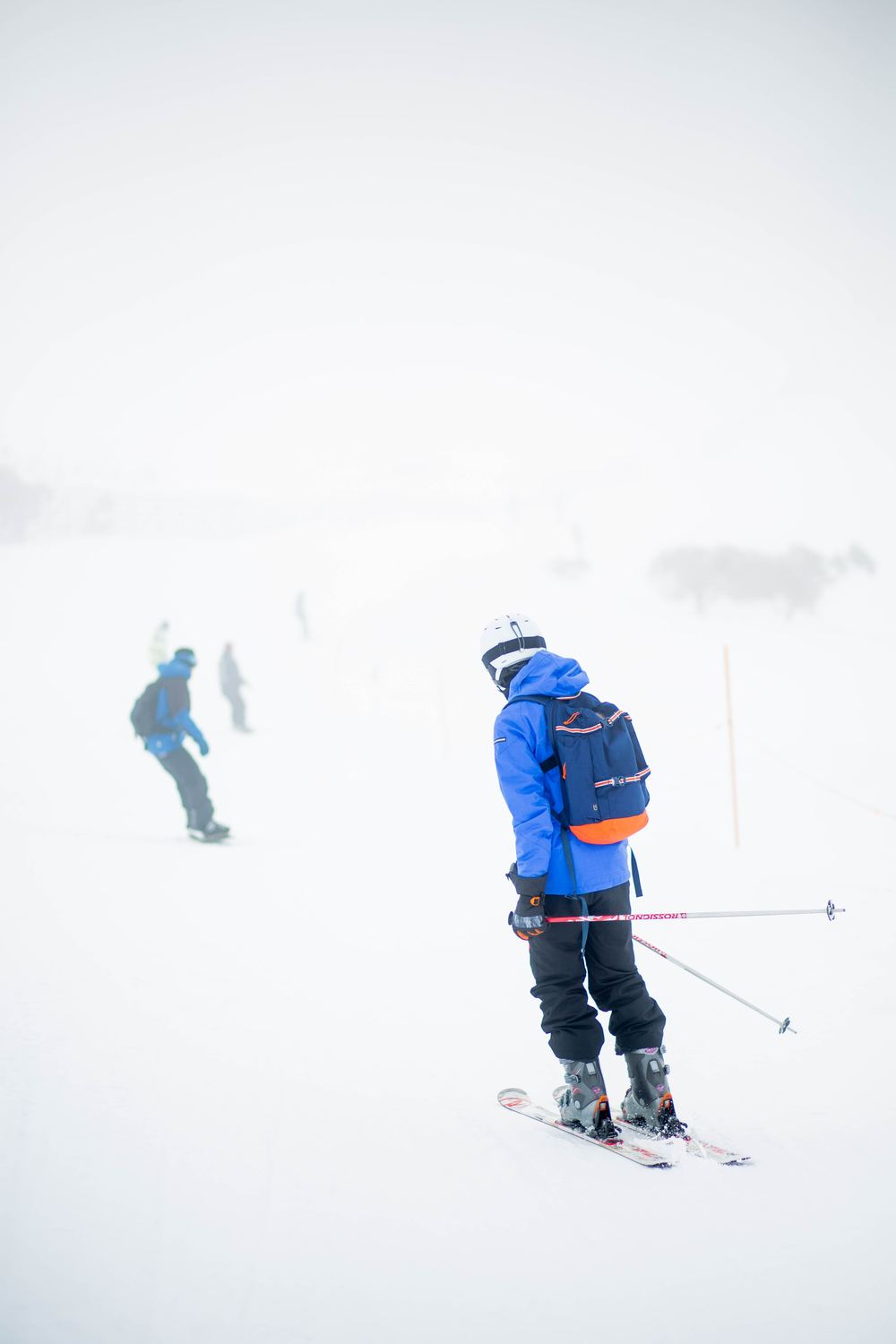
What Can You Expect Before Beginning?
Every cat skiing experience and operation is unique, but there are some similarities across the board.
Generally, a cat skiing adventure takes place over the course of an entire day. You begin with an early morning briefing from your snowcat skiing guides.
Your guides will go over the ever-important essential rules of avalanche safety and make sure that you are confident in using your ski equipment before you head out.
Then, you and your group load up your equipment into the back of the snowcat and climb aboard the cabin to ride up the mountain!
When the cat drops you off at the top, you will find yourself surrounded only by the beauty of nature, in a true backcountry skiing experience.
What Can You Expect on the Mountain?
After your guide outlines the boundaries of your run and shares some information about what to expect from the different lines that you could take through it, you set off down the slopes for a fantastic first run.
When that run is complete, you get right back into the snowcat and head up the mountain to locate a fresh spot. From there, the fun and adventure starts all over again!
The ski runs and snowcat climbs repeat until late in the afternoon when you are ready to kick back and relax at the lodge while chatting with your friends and family about the adventure you had that day.
Cat skiing is not as expensive as heliskiing, but it creates just as exciting an adventure. During the busy season, a cat-skiing lodge may charge you around $800 per day or more, while in the offseason, you may end up paying as little as $250 per day instead.
The price all depends on the time of year and what amenities are included, such as food and lodging.
Where to Do Snowcat Skiing
While you can go cat skiing all over the world, even in Europe, Chile, and New Zealand, the best cat skiing locations are in the North American mountain ranges, throughout the United States and Canada.
This is typically thanks to the more commercialized areas, which attract a higher volume of clients and therefore make it possible to develop the roads and equipment necessary.
Here are some of the best locations for snowcat skiing!
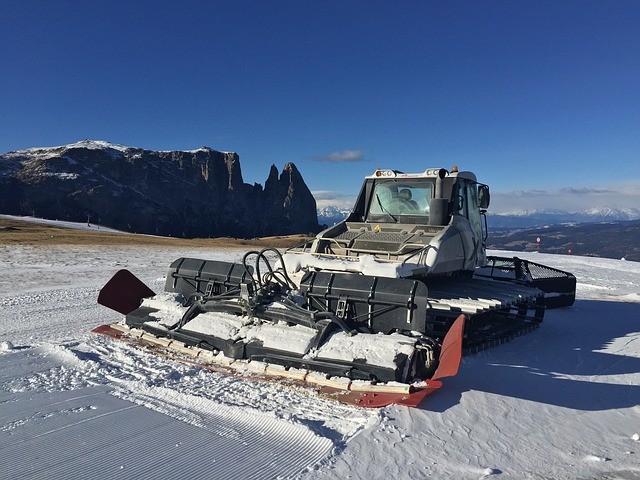
Selkirk Wilderness, British Colombia
British Columbia is the birthplace of cat skiing, and Selkirk Wilderness has been the ideal destination for adventurous backcountry skiers since 1975.
Its mountains offer a snow-covered expanse of glades, chutes, and bowls. The lodge you use as a home base here is famous around the world.
Powder Mountain, Utah
Powder Mountain is located a mere hour north of Salt Lake City, Utah. The Snowcat Powder Safari takes off from the main lodge, carrying you up the mountain in one of two 10-person cats.
Powder Mountain gets an average yearly snowfall of around 500 inches (nearly 42 feet). As such, you’re bound to get some great knee-deep powder turns while skiing over the 3,000 acres of backcountry terrain available to you. You can do between nine and fifteen runs on your trip.
Chugach Mountains, Alaska
Cat skiing in Alaska typically involves skiing over 10,000 feet through vertical runs.
There is enough room in these mountains to make sure that you never ski the exact same route twice as you journey through powder bowls, over steep spines, and past gorgeous acres of Sitka spruce trees.
Nelson, British Columbia
Baldface Lodge in Nelson, British Columbia, is an excellent starting point for thrilling, heart-pounding snowcat skiing.
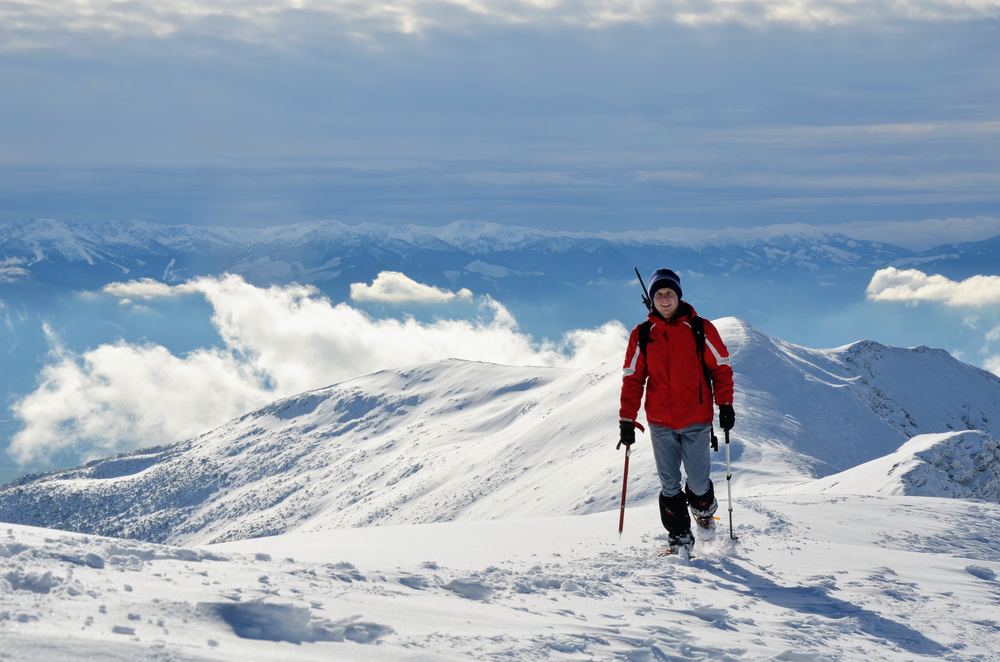
This area covers 32,000 acres of untouched terrain, with 50-degree pitches and 3,000-vertical-foot runs.
You can ski over 20,000 feet in a day here – so make sure you are in tip-top shape before you begin this adrenaline rush of an adventure!
Ajax Mountain, Colorado
Aspen Mountain Powder Tours at Ajax Mountain is a great opportunity for a family snowcat skiing trip.
This outing is led by certified ski instructors who guide intermediate skiers of any and all ages to achieve between ten and twelve runs along smooth, 1,000-vertical-foot open bowls.
The lodge also features family movie nights for a relaxing end to the day!
Fernie, British Columbia
Island Lake, just nine miles away from Fernie, British Columbia, gets around 470 inches of snow every year (nearly 40 feet, or 12 meters). It is home to a luxurious lodge with access to 2,600-vertical-foot runs.
This lodge includes a full spa and massage area, as well as a classy bar and dining room looking out over the range’s 7,000 acres of ski terrain.
Copper Mountain, Colorado
While most snowcat trips understandably charge their participants an entry fee, this alpine resort actually offers free snowcat rides for expert skiers!
This cat skiing trip travels up Tucker Mountain, which features treeless runs and steep ski chutes.
This video shows an example of a cat skiing expedition.
How Much Skiing Experience Do You Need for Cat Skiing?
Because of its backcountry nature, you should be a strong skier before you begin on your cat skiing adventure.
However, you do not need to be an expert.
General Lessons
You should feel comfortable skiing in all kinds of snow conditions, so you may want to practice or even take some courses at a local ski resort first.
Knowledge on how to ski in a wide variety of conditions, from chopped-up snow to fresh powder, will make sure that you can handle any situation you run across in the wild backcountry.
It is also a good idea to have some backcountry skiing experience already, though depending on the snowcat program, you may be shown the basics of using your backcountry equipment before you head out to the mountain.
Snowcat-Specific Lessons
You can also take courses in snowcat skiing specifically.
These courses will teach you how to pick the best ski line for you, how to control your speed as you ski, and how to make the best use of the natural obstacles and jumps in the untamed terrain.
Snowcat Trips By Experience Level
Once you have a good grasp of your ability and confidence level, you should seek out a snowcat skiing trip that is designed for people at your level.
There are a wide variety of programs out there, from beginner groups to advanced runs! While most cat skiing operations require you to be 18 or 19 years old in order to sign up for a trip, other companies offer adventures for families with kids as young as 12 years old, as long as they are strong, experienced skiers.
How Dangerous is Snowcat Skiing?
While there is a certain amount of risk to any cat skiing excursion, this venture is highly regulated and supervised.
Your guides are always trained by accredited organizations, such as the Canadian Ski Guide Association and Institute, or CSGAI. They know how to read the terrain, and they will not take you over any routes that are too steep to be safe or which may cause a high risk of avalanche.
Before you even set foot onto the snowcat, your guide will provide you with an avalanche transceiver and run you through what to do if an avalanche does, in fact, occur.
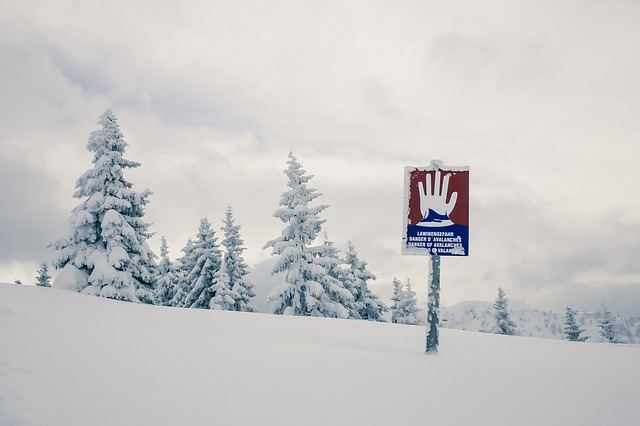
Your guide will show you different line options before each run, such as the more mellow gradients and the much steeper pitches, and inform you about any hazards along the way, like cliffs or drops. This allows you to choose the path you prefer based on your level of confidence and experience.
More advanced skiers may want a riskier path! No matter what your experience level, cat skiing is a safe adventure for all.
What Equipment Do You Need for Cat Skiing?
Here is what you should bring with you on any snowcat skiing trip.
Clothing
It is vital that you dress appropriately for your adventure! Wear clothing that has an appropriate level of warmth and that will wick away sweat as you ski.
Multiple layers are a good idea, in case the weather changes throughout the day.
Ski Gear
You should bring your regular ski gear with you because that is the equipment you are most comfortable with. If you plan on renting skis from the lodge, still bring your own ski boots and poles.
When choosing your skis, you should select powder skis, or “fat skis.” These skis are built for different and deeper snow conditions, like what you will find in the backcountry.
Avalanche Gear
Because you will be skiing through untamed backcountry areas, there is always a risk for an avalanche. Consequently, it is vital that you have full avalanche gear with you when you go cat skiing.
This gear includes a transceiver, allowing you to call for help, as well as a probe and shovel to help dig yourself or someone else out of a snowbank, and finally an avalanche airbag system to protect you from a tough impact.
You can bring your own personal avalanche safety gear on your snowcat skiing adventure, which is a good idea, because you will already be comfortable with the equipment. This is untamed terrain – so you don’t need more surprises!
However, if you do not have any avalanche safety gear yet, the snowcat operator will have gear that you can either borrow or rent from the company, depending on their policies.
Here’s a video showing an example of avalanche gear.
Conclusion
Now that you know what cat skiing is, where to do it, and what you should bring with you, you are ready to set out on your own adventure!
What’s your experience with cat skiing?

